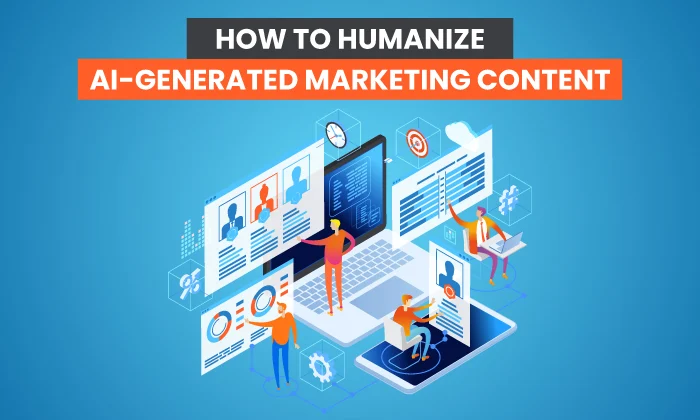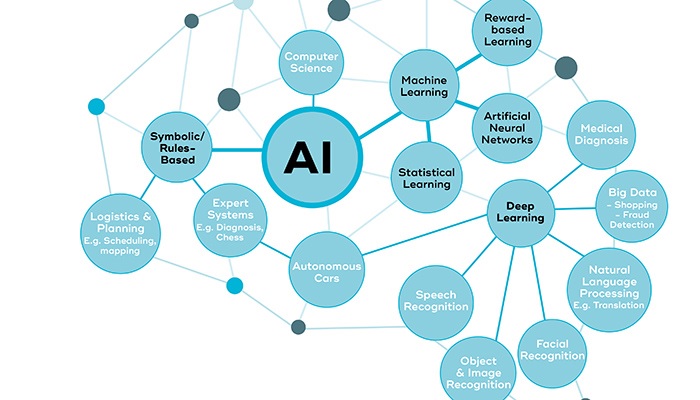Artificial intelligence (AI) is changing the digital marketing landscape in several ways, and its impact will continue to grow. AI-powered writing tools can create content that mimics human writing, producing text that is difficult to distinguish from human writing. From product descriptions to email campaigns to social media posts, AI writing has become more popular and sophisticated, and the evolution is nothing short of amazing.
The development of AI writing began in the early days of digital marketing, when companies began using computer programs to create automated emails and online advertisements. and lacked complexity, resulting in a lofty and unwieldy text that customers could not engage with. But over time, advances in machine learning and natural language processing have paved the way for the development of more sophisticated AI writing tools that can analyze data, recognize patterns, and produce high-quality content.
Table of Contents
The Emergence of AI Writing in Digital Marketing
In the early days of AI writing, companies used simple algorithms to generate automated emails, ads, and social media posts. These technologies are crude and lack the creativity and nuance of human writing, resulting in mechanical and impersonal texts. But as technology has evolved, so has the quality of content produced by AI lighting tools.

The news industry was the first and most successful adopter of AI writing. News outlets such as the Associated Press have started using AI-powered writing tools to create news stories based on data and analytics. These tools analyze the data and produce news texts in seconds to keep you up to date on breaking news events.
As AI writing technology evolved, companies began creating more complex content such as product descriptions, blog posts, and social media updates. These tools can analyze large amounts of data, recognize patterns, and generate text that mimics human writing, making them valuable assets for digital marketers.
However, as the use of AI lighting grows, so do concerns about its impact on the digital marketing landscape. The next section discusses the benefits and limitations of AI writing in digital marketing.
The latest AI lighting technologies and their impact
As AI lighting technologies have evolved, they have become more sophisticated and capable of producing high-quality content that is difficult to distinguish from that produced by human authors. One of the most important advances in AI writing technology is the use of natural language processing. This allows computers to understand and interpret human language, creating more nuanced and sophisticated text.
AI writing tools are now being used to create a wide range of content, including product descriptions, social media posts, and even long-form articles. These tools can analyze data, recognize patterns, and generate engaging, informative, and highly personalized copy, making them valuable assets for digital marketers. Although AI lighting technology has many advantages, it also has limitations. AI-generated content may lack the personality and believability of human text, making it impersonal and uninteresting. Additionally, AI writing tools can struggle to create highly creative or emotional content, requiring a level of nuance and complexity that machines have difficulty replicating.
The Future of AI Writing in Digital Marketing
The future of AI writing in digital marketing looks bright, with continued advancements in machine learning and natural language processing enabling AI writing tools to become even more sophisticated and capable of producing high-quality content. AI writing is expected to play an increasingly important role in content marketing, with tools being developed that can create highly personalized and engaging content for individual users based on their preferences and behaviors.

However, as AI writing technology continues to advance, concerns about its impact on the digital marketing landscape have also emerged. Questions about the ethics of using AI-generated content in marketing campaigns and the potential for AI to replace human writers altogether have been raised.
To ensure the responsible and effective use of AI writing technology in digital marketing, it is essential to strike a balance between the use of machines and human writers. The next section will explore best practices for incorporating AI writing into digital marketing strategies and the tools and resources available for implementing AI writing in marketing campaigns.
How to Tell If a Text is Written by an AI or Human?
While AI writing technology has come a long way in recent years, it is still possible to tell if a text has been written by an AI or human. Here are some characteristics of AI-generated content to look out for:
1. Generic language:
AI-generated content can often be characterized by the use of generic, formulaic language that lacks nuance and creativity.
3. Repetitive sentence structures:
AI writing tools can sometimes produce content with repetitive sentence structures, which can make it feel robotic and mechanical.
4. Lack of personality:
AI-generated content can sometimes feel impersonal and lacking in personality, as machines are not able to replicate the unique style and voice of human writers.
However, it is important to note that these characteristics are not always present in AI-generated content. As AI writing technology advances, machines are getting better at reproducing the style and tone of human writing, making it increasingly difficult to distinguish between AI and human-generated content.
There are several tools and techniques you can use to more reliably detect AI writes. Plagiarism checkers and readability tests help identify AI-generated content that often lacks originality and readability. Additionally, there are several online tools specifically designed to detect AI writes. If you want to use it, you can easily find it online. However, one of the best AI writing detectors is provided by TextX.
This is a tool that helps identify AI-generated content and distinguish it from human-generated content. Here’s how this tool works:
You can see that the pasted text was mostly written by bots or AI. Similarly, you can also check the content. TextX combines natural language processing and machine learning to analyze text and determine whether it was written by a machine or a human. The tool is easy to use and provides accurate results, making it a must-have resource for digital marketers who want to ensure the authenticity of their content.
Conclusion
Although AI writing techniques have come a long way in recent years, it is still possible to distinguish between AI and human-generated content. By recognizing the characteristics of AI-generated content and using tools like TextX, digital marketers can ensure that content is authentic, engaging, and effective.



